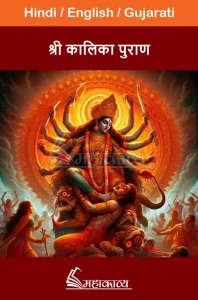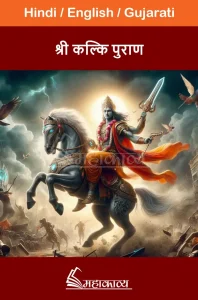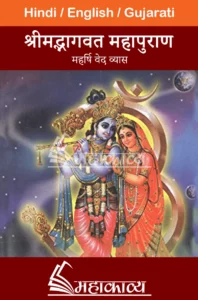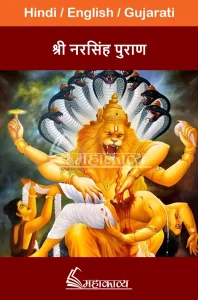Read Agni Purana in English
Among the eighteen Puranas, the Agni Purana (Agni Purana in English) is a very ancient Purana and a vast storehouse of knowledge. While narrating this Purana, Agnidev had told Maharishi Vasistha that –
आग्नेये हि पुराणेऽस्मिन् सर्वा विद्या: प्रदर्शिता:
Meaning:- In this Agni Purana there is a description of all the Vidyas.
According to scholars, Agni Purana has been called the ‘encyclopedia of Indian culture. In this Purana, there is a detailed description of the worship of Brahma, Vishnu, Shiva, and Surya. In the Agni Purana, a brief story of Mahabharata and Ramayana, description of para-para Vidyas, the story of the incarnations of Lord Vishnu, the mantras of all the gods, etc. have been explained in a very beautiful way.
Agni Dev himself is the speaker of this Purana, hence the name of this Purana is Agni Purana. Although this Purana is very small, all the sciences are included in this Purana. According to Padma Purana, Agni Purana is said to be the left foot of Lord Vishnu.
Read here in one click ~ Agni Purana in Hindi
Table of Contents
Toggleintroduction:-
Agni Purana (Agni Purana in English) has 383 chapters and 11,475 verses. Lord Agni himself had narrated this Purana to Maharishi Vashist ji, hence this Purana is famous as Agni Purana. It has been told in Naradpuran Purana that there are 15 thousand verses in Agni Purana, and according to Matsya Purana 16 thousand Shlokas are told in Agni Purana. This Purana is considered to be a very important Purana from the point of view of learning and classic. Many well-known disciplines have been collected in the Agni Purana.
The story of the incarnations of Lord Vishnu is described at the beginning of Agni Purana. This Purana describes in detail about 11 Rudras, 8 Vasus, and 12 Surya’s. The description of the worship of Lord Vishnu and Lord Shiva in Agni Purana, description of the worship of the Sun, etc.
In the Agni Purana, rituals, idol consecration, havan, temple construction, etc. methods have also been told. A specific description of Ayurveda is given in the last part of Agni Purana. Ayurveda is explained in many chapters of Agni Purana. In this Purana, verses, ornamentation, and grammar are also given.
Importance:-
The Agni Purana holds a superior position because of its vast knowledge store and its comprehensive view of the Puranas. Due to the description of Sarga, Pratisarga, Vansh, Manvantara, and Vanshnucharit in this Purana, it is also called ‘Panchalakshana’ Purana. In the Agni Purana, such a beautiful description of the Para and Apara Vidyas of ancient India has been said, that we can call it a huge encyclopedia.
Agni Purana is a famous and important Purana, because the description of all the disciplines and this Purana is described by the own Shrimukh of Agnidev. Agni Purana is divided into two parts, in the first part, a detailed description of Brahma Vidya is found. By listening to this Purana, not only the gods, humans, animals, birds, and all beings attain happiness and prosperity. Agnidev has given narrations about the fruit that comes from building a temple. In this Purana, a detailed description of the sixty-four Yoginis has also been saying. In this Purana, light has also been thrown about the calculation of time.
The importance of fasts like Dashami fast, Ekadashi fast, Pratipada fast, Shikhivrat, etc. have been explained in Agni Purana. The story of a Brahmin named in it has also been told.
brief information:-
In the Agni Purana, the description of Ishan Kalpa has been told by Agnidev to Maharishi Vashistha. In this Purana, there are questions about the Purana theme, then the story of the incarnations of Lord Vishnu, and then the description of the creation and the message of worship of Lord Vishnu has been narrated. In this Purana, a review of fireworks, verses, signs of currency, and the knowledge of universal initiation and empowerment have been told. After this, different descriptions have been given of the characteristics of the mandala, the earning of kushama, the rituals of consecration, the rituals of the temple, the worship of Shaligram, and the idols. In this Purana, Sarvadev Pratishtha, description of the universe, the greatness of the river Ganges and pilgrimages have been described.
At the end of Agni Purana, the review of bodily Vedanta, various types of peace, verses, literature, monosyllabic, description of hell, Yogashastra, Brahmagyan, and the fruit of listening to Puranas are said.
Read This Also
Please wait while flipbook is loading. For more related info, FAQs and issues please refer to DearFlip WordPress Flipbook Plugin Help documentation.






 Download the Mahakavya App
Download the Mahakavya App